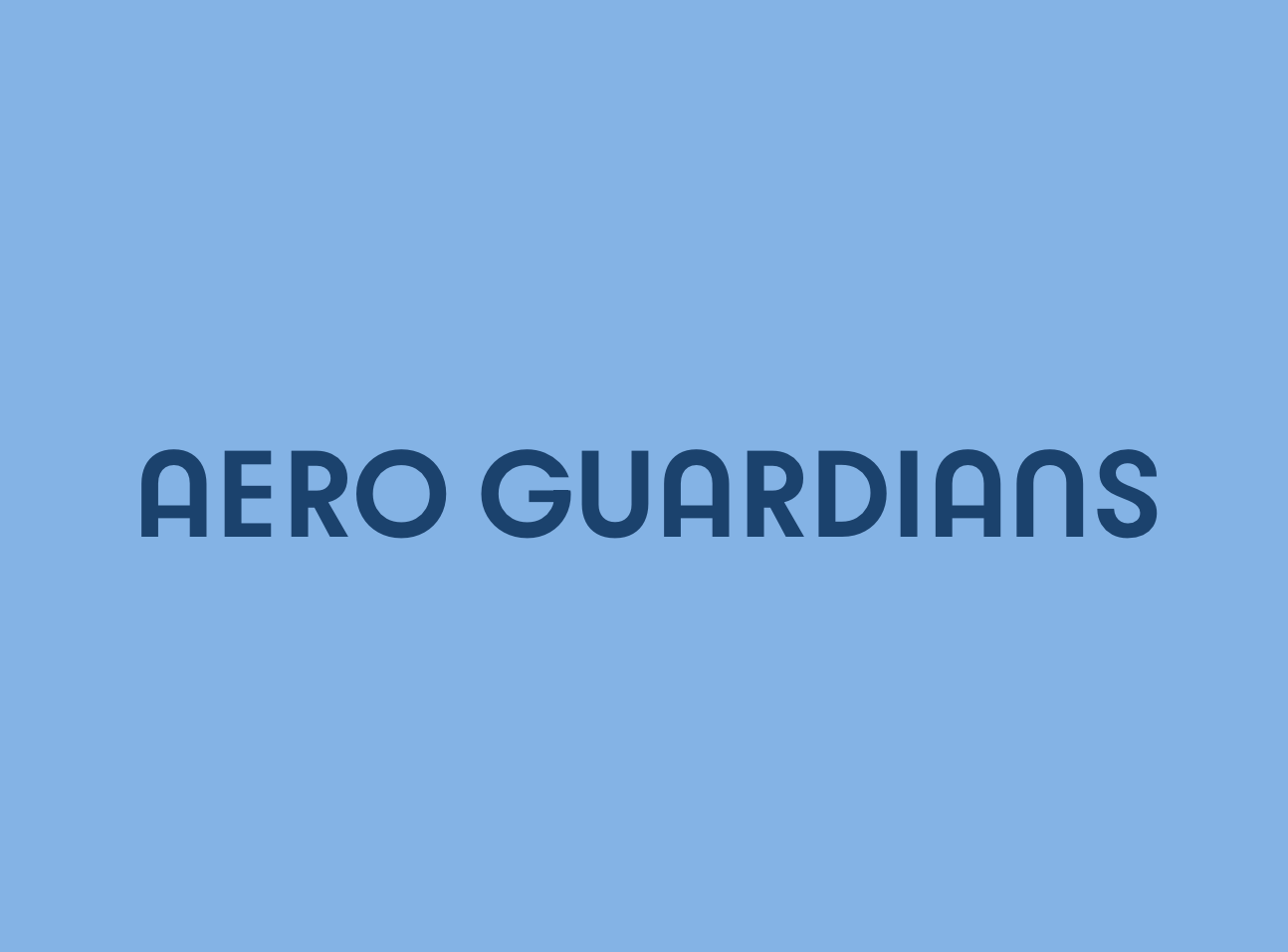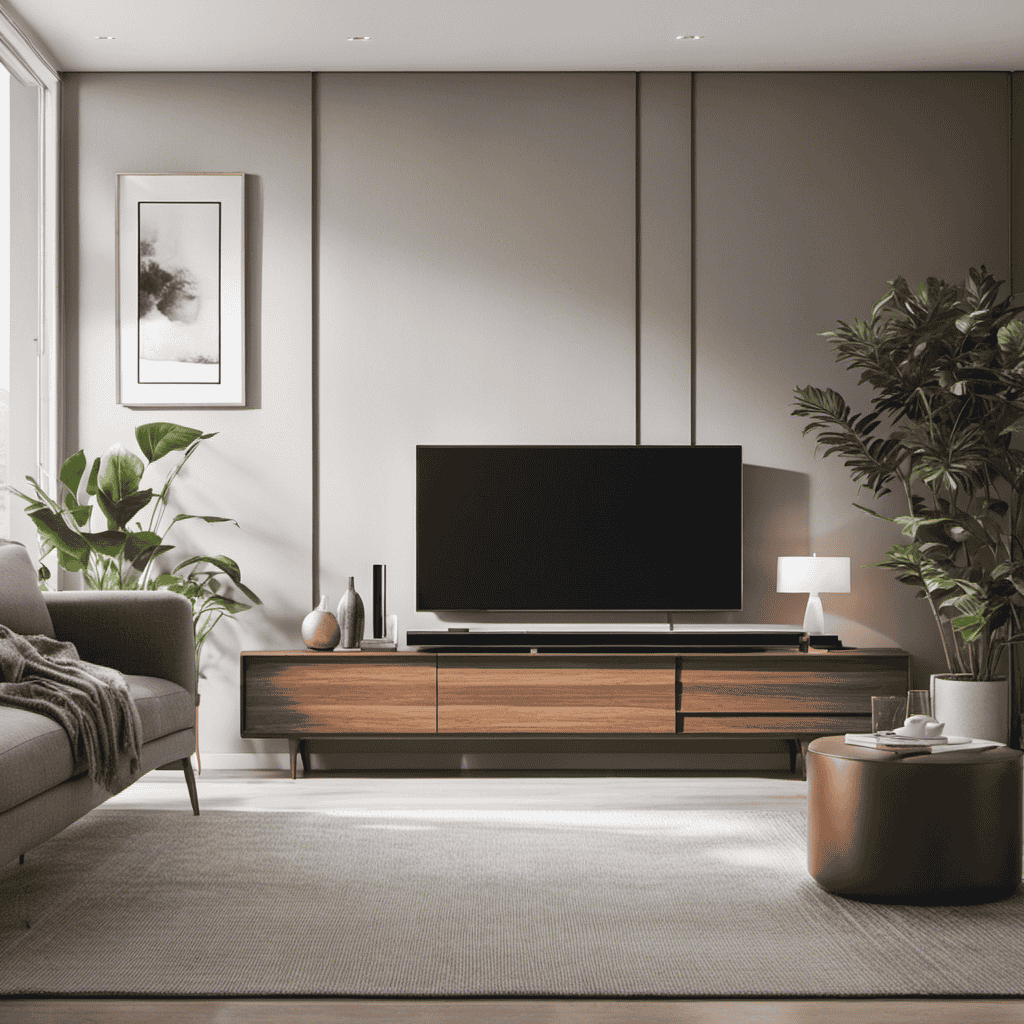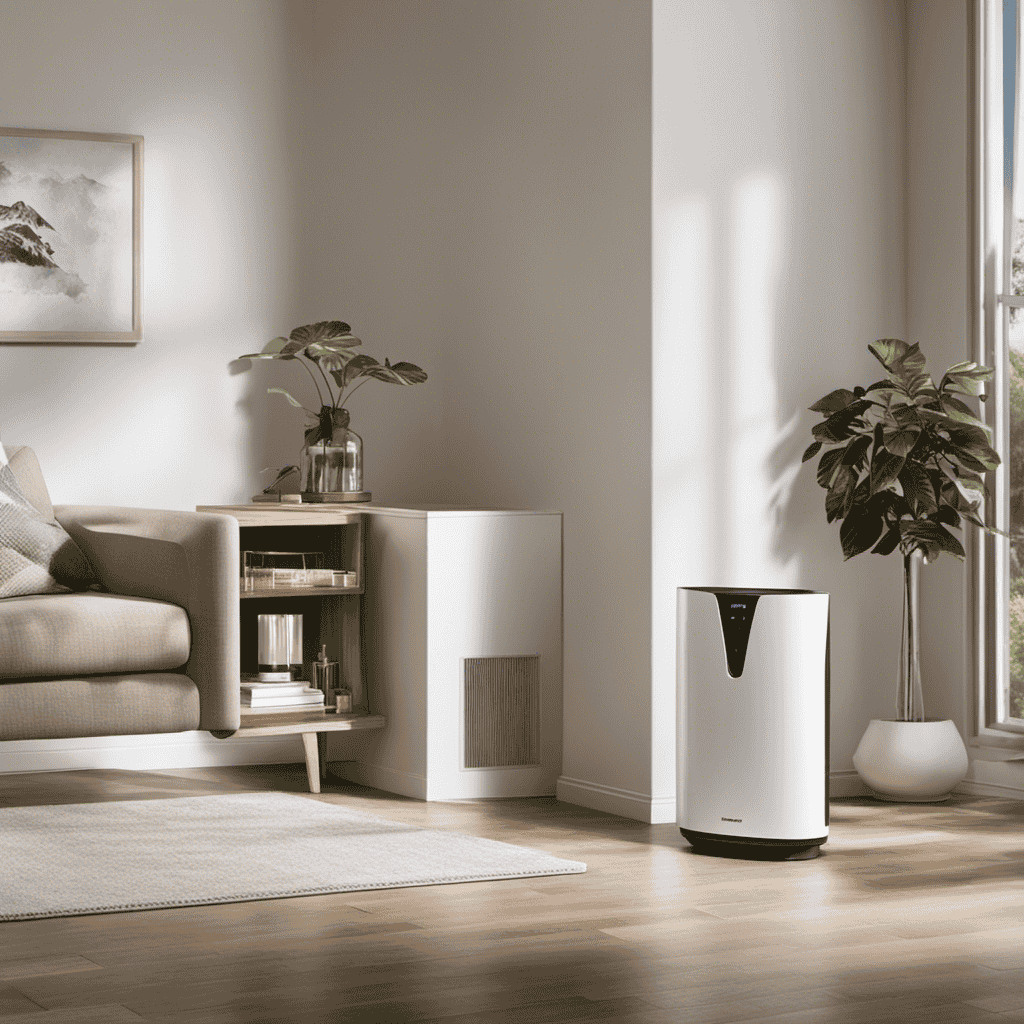FAQs - Advanced Queries
How Do I Clean My Air Purifier Filter
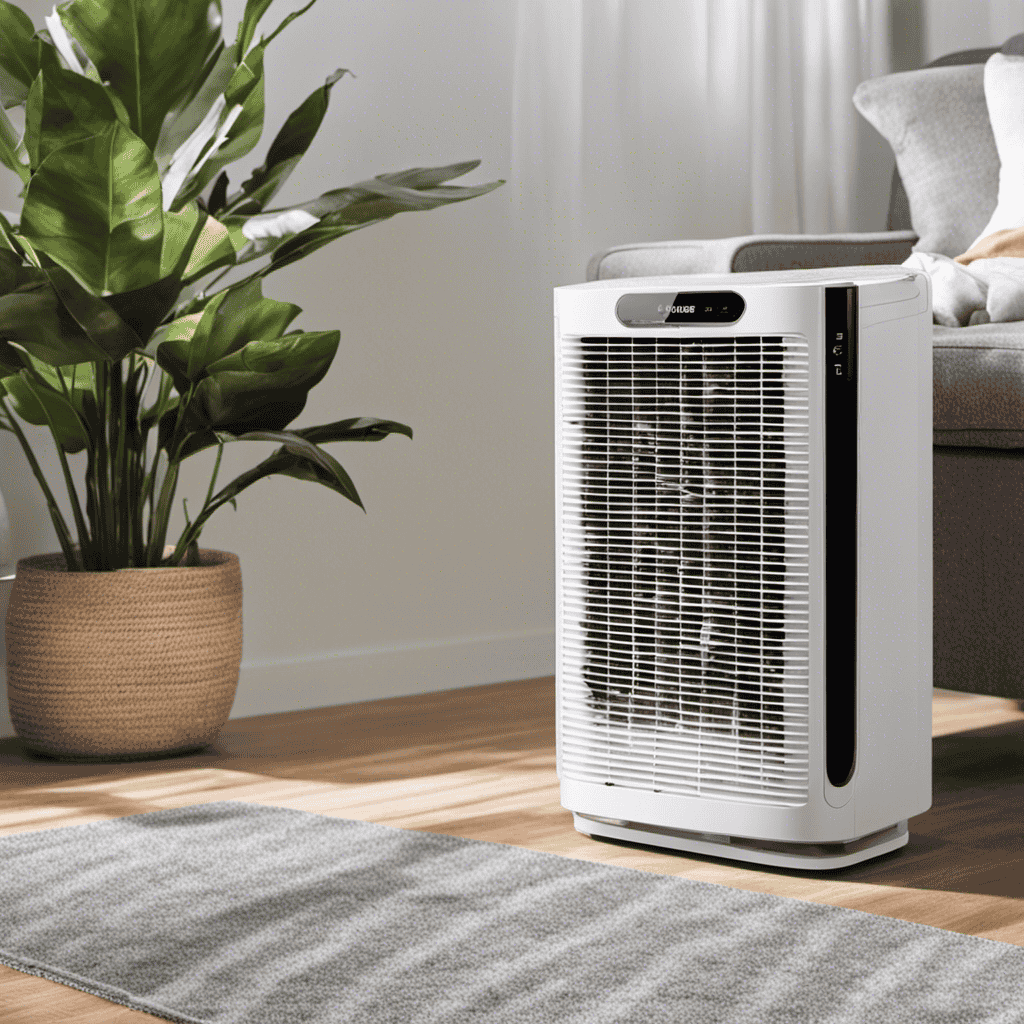
Hello! Have you ever thought about how to clean the filter on your air purifier? Don’t worry, I can help with that.
In this article, I’ll walk you through the step-by-step process of cleaning your filter to keep your air purifier running efficiently.
We’ll discuss different types of filters, the importance of regular cleaning, and provide you with helpful tips to maintain filter efficiency.
So, let’s dive in and make sure your air purifier is doing its job of keeping your air clean and fresh!
Key Takeaways
- Different types of air purifier filters include HEPA filters, activated carbon filters, and electrostatic filters. The choice of filter depends on the specific pollutants you want to target.
- Regular cleaning and maintenance of the air purifier is important for maximizing its benefits and longevity. It ensures effective removal of airborne pollutants, improves air quality, and saves money on filter replacements.
- Cleaning the filter allows the air purifier to operate efficiently, saving energy and reducing costs. Regular cleaning prevents the filter from becoming excessively dirty or clogged, extending its lifespan.
- Proper cleaning techniques involve vacuuming the filter to remove larger particles, rinsing it with mild soap and water if washable, and allowing it to air dry completely before reinstalling. Harsh chemicals or excessive force should be avoided to prevent damage.
Different Types of Air Purifier Filters
There are three main types of air purifier filters that you can choose from. These filters are designed to remove different types of pollutants and improve the air quality in your home.
The first type is a HEPA filter, which stands for High-Efficiency Particulate Air. HEPA filters are highly effective at capturing small particles such as pollen, dust mites, and pet dander.
The second type is an activated carbon filter, which is great for removing odors and chemicals from the air.
Lastly, there are electrostatic filters, which use an electric charge to attract and trap particles.
When choosing the right filter for your air purifier, consider the specific pollutants you want to target and the size of the area you want to purify.
It’s important to regularly clean and replace your air purifier filters to maintain their effectiveness and ensure clean air in your home.
Importance of Regular Cleaning
Regular maintenance is crucial for maximizing the benefits and longevity of an air purifier. By regularly cleaning and maintaining the air purifier, you can ensure that it continues to effectively remove airborne pollutants and allergens from the indoor environment.
Additionally, proper maintenance can extend the lifespan of the air purifier, saving you money in the long run.
Benefits of Maintenance
To keep your air purifier running efficiently, make sure you regularly clean the filter to enjoy the benefits of proper maintenance. Regular maintenance not only ensures that your air purifier functions optimally but also provides several benefits.
Firstly, it improves the air quality in your home by removing dust, pollen, and other allergens. This is especially beneficial for individuals with allergies or respiratory conditions.
Secondly, regular cleaning prolongs the lifespan of your filter, saving you money in the long run by avoiding the need for frequent replacements. To further extend the filter’s life, consider vacuuming it before cleaning to remove larger particles. Additionally, avoid using harsh chemicals or excessive force while cleaning to prevent damage.
Longevity of Air Purifier
Cleaning the filter regularly ensures that the air purifier functions optimally and extends its lifespan. Here are three important reasons why maintaining your air purifier’s filter is crucial for longevity:
-
Improved Air Quality: A clean filter traps and removes airborne particles such as dust, pollen, pet dander, and mold spores. By regularly cleaning the filter, you ensure that your air purifier continues to effectively purify the air, providing you with clean and healthy indoor air quality.
-
Energy Efficiency: A clogged filter forces the air purifier to work harder, consuming more energy and potentially leading to higher electricity bills. By cleaning the filter, you allow the air purifier to operate efficiently, saving energy and reducing costs.
-
Prolonged Filter Lifespan: Regularly cleaning the filter prevents it from becoming excessively dirty or clogged. This not only maintains the air purifier’s performance but also extends the lifespan of the filter, saving you money on replacement filters.
Tools and Materials You’ll Need
When it comes to maintaining the cleanliness and efficiency of your air purifier, two key factors to consider are cleaning frequency guidelines and proper cleaning techniques.
Cleaning frequency guidelines will help you determine how often you should clean your air purifier based on factors such as the type of filter, the level of air pollution, and the manufacturer’s recommendations.
Proper cleaning techniques are essential to ensure that you remove all dirt, dust, and allergens effectively without damaging the unit or compromising its performance.
Cleaning Frequency Guidelines
You should consider the cleaning frequency guidelines for your air purifier filter. Proper maintenance of your air purifier filter is essential to ensure its optimal performance and longevity. Here are three important guidelines to keep in mind:
-
Regular cleaning: Depending on the type of air purifier and its usage, you should clean the filter at least once every three to six months. This will prevent the accumulation of dust, allergens, and other particles that can hinder its efficiency.
-
Filter replacement: No matter how diligently you clean your air purifier filter, it will eventually reach a point where it needs to be replaced. Most manufacturers recommend replacing the filter every six to twelve months, depending on usage. This ensures that your air purifier continues to provide clean and fresh air.
-
Cleaning methods: When cleaning your air purifier filter, follow the manufacturer’s instructions. Typically, you can use a vacuum cleaner or wash it with mild soap and water. Be sure to let the filter dry completely before reinstalling it to avoid any damage.
Proper Cleaning Techniques
Now that we know how often to clean our air purifier filters, let’s discuss the proper cleaning techniques to ensure their optimal performance.
When cleaning your air purifier filter, it is crucial to follow the manufacturer’s instructions. Start by unplugging the unit and removing the filter. Avoid using harsh chemicals or hot water, as they can damage the filter. Instead, gently vacuum the filter to remove any loose debris.
If the filter is washable, rinse it with lukewarm water and a mild detergent, then allow it to air dry completely before reinstalling. A common mistake to avoid is not waiting for the filter to dry properly, as damp filters can promote mold growth.
Additionally, never use the air purifier without a filter, as this can damage the unit and reduce its effectiveness.
Step-by-Step Guide to Cleaning
To clean your air purifier filter, start by unplugging the device and carefully removing the filter cover. Regular maintenance is essential for the optimal performance of your air purifier. Here are three important steps to follow when cleaning your filter:
-
Gently tap the filter to remove any loose debris or dust particles. Avoid using excessive force as it could damage the filter.
-
Rinse the filter under cold running water to remove stubborn dirt and grime. Make sure to follow the manufacturer’s instructions as some filters may require specific cleaning methods.
-
Allow the filter to air dry completely before reinstalling it. It’s crucial to ensure that the filter is completely dry to prevent mold or bacteria growth.
It’s important to avoid common cleaning mistakes such as using harsh chemicals, scrubbing the filter vigorously, or failing to clean it regularly. By following these steps and avoiding these mistakes, you can maintain a clean and efficient air purifier.
Tips for Effective Cleaning
When it comes to maintaining an efficient and clean air purifier, it is crucial to use proper cleaning techniques. This includes carefully removing the filter, gently brushing off any dust and debris, and rinsing it under lukewarm water.
Additionally, it is important to clean the filter on a regular basis, ideally every two to three months, to ensure optimal performance and prolong its lifespan.
Proper Cleaning Techniques
You should start by unplugging the air purifier and carefully removing the filter for proper cleaning techniques. Cleaning the air purifier filter is crucial to maintain its efficiency in purifying the air in your home. Here are the best cleaning practices for your air purifier filter:
-
Vacuuming: Use a vacuum cleaner with a brush attachment to remove dust and debris from the filter. Gently run the brush over the filter’s surface to dislodge any particles.
-
Washing: Some air purifier filters are washable. Follow the manufacturer’s instructions to properly clean the filter. Use mild soap and water to gently wash away dirt and grime. Rinse thoroughly and allow the filter to dry completely before reinstalling.
-
Replacement: If your air purifier filter is not washable or has reached its maximum cleaning lifespan, it’s time to replace it. Check the manufacturer’s recommendations for the recommended replacement frequency.
Frequency of Filter Cleaning
Regularly maintaining your air purifier filter is essential for ensuring optimal performance and improving the air quality in your home. The frequency at which you should clean your filter depends on several factors, including the type of air purifier you have and the level of pollutants in your environment. To help you determine the appropriate cleaning frequency, refer to the table below:
| Type of Air Purifier | Pollutant Level | Cleaning Frequency |
|---|---|---|
| HEPA Filter | High | Every 2-3 months |
| Carbon Filter | Moderate | Every 3-6 months |
| Ionic Filter | Low | Every 6-12 months |
It is important to note that these are general guidelines and may vary depending on individual circumstances. Additionally, proper cleaning techniques should be followed to ensure effective removal of trapped pollutants. Refer to the previous subtopic, "Proper Cleaning Techniques," for detailed instructions on how to clean your air purifier filter.
Common Mistakes to Avoid
To avoid common mistakes, make sure to regularly check and replace your air purifier filter as recommended. Neglecting to do so can result in poor air quality and reduced efficiency of your air purifier.
Here are three common mistakes to avoid when it comes to your air purifier filter:
-
Ignoring signs of a dirty filter: If you notice a decrease in air flow, a musty odor, or visible dirt and debris on the filter, it’s time for a replacement. Ignoring these signs can lead to decreased performance and potentially harmful air quality.
-
Not following manufacturer’s recommendations: Each air purifier has specific guidelines for filter replacement. Make sure to read the manual and follow the recommended schedule to ensure optimal performance.
-
Failing to properly clean the filter: Some air purifiers have washable filters, but if not cleaned properly, they can become clogged and ineffective. Follow the manufacturer’s instructions for cleaning to maintain the longevity and efficiency of your filter.
By avoiding these common mistakes, you can ensure that your air purifier operates at its best, providing clean and fresh air for you and your family.
Now let’s discuss the frequency of filter cleaning.
Frequency of Filter Cleaning
Now that we have discussed the common mistakes to avoid when cleaning an air purifier filter, let’s move on to the next important aspect: the frequency of filter cleaning.
Maintaining a proper cleaning schedule is crucial for the optimal performance of your air purifier. The frequency of filter cleaning depends on several factors, such as the air quality in your area and the usage of the purifier.
As a general guideline, it is recommended to clean the filter every 2-3 months. However, if you live in an area with high pollution or if you use the purifier extensively, it may be necessary to clean the filter more frequently.
Following the manufacturer’s instructions and guidelines is always the best practice to ensure the longevity and effectiveness of your air purifier.
Signs Your Filter Needs Cleaning
Are you experiencing decreased airflow or a noticeable increase in dust particles in your home? These could be warning signs that your air purifier filter needs cleaning. Here are three indicators that it’s time to clean your filter:
-
Reduced Airflow: If you notice that the airflow from your air purifier has decreased significantly, it may be due to a clogged filter. A dirty filter restricts the flow of air, making it less effective in capturing dust and allergens.
-
Increased Dust: If you see a buildup of dust particles in your home, it could be a sign that your filter is dirty. A clogged filter cannot effectively trap and capture dust, allowing it to circulate in your living space.
-
Strong Odors: A dirty filter can also cause unpleasant odors in your home. When the filter becomes clogged, it can no longer effectively remove odors, resulting in lingering smells.
To maintain filter efficiency and ensure clean air in your home, it is essential to clean your air purifier filter regularly.
Maintaining Filter Efficiency
If you want to ensure clean air in your home, make sure you regularly maintain the efficiency of your filter. Proper maintenance is essential for maintaining filter performance and extending its lifespan.
To start, always refer to the manufacturer’s instructions for specific guidance on cleaning and maintenance. One important step is to regularly check and clean the filter. This can be done by gently removing the filter from the air purifier and using a soft brush or vacuum cleaner to remove any dust or debris.
It’s also important to replace the filter according to the manufacturer’s recommended schedule. This will prevent the filter from becoming clogged and ensure optimal performance.
Troubleshooting Filter Cleaning Issues
Regularly checking and cleaning your air purifier’s filter is important to ensure optimal performance and extend its lifespan. However, sometimes you may encounter issues while cleaning the filter. Here are three troubleshooting tips to help you overcome common problems and ensure effective filter cleaning:
-
Inspect the filter: Before cleaning, carefully examine the filter for any signs of damage or excessive dirt buildup. If you notice any tears or holes, it may be time to replace the filter.
-
Use the correct cleaning method: Different air purifier filters require different cleaning techniques. It is essential to follow the manufacturer’s instructions to ensure you are using the appropriate cleaning method for your specific filter type.
-
Allow the filter to dry completely: After cleaning, make sure to allow the filter to dry thoroughly before reinstalling it. A damp or wet filter can lead to mold growth and decreased efficiency.
Frequently Asked Questions
Can I Use Soap or Detergent to Clean My Air Purifier Filter?
I wouldn’t recommend using soap or detergent to clean your air purifier filter. It’s best to stick to cleaning methods that don’t involve water, such as vacuuming or using a brush.
How Often Should I Replace My Air Purifier Filter?
I clean my air purifier filter every 3-6 months or when it becomes visibly dirty. Signs that it needs replacing include reduced airflow and an increase in dust or allergens in the air.
Can I Wash My HEPA Filter With Water?
Yes, you can wash your HEPA filter with water as an alternative method to chemical cleaning. It is important to ensure the filter is completely dry before reinstalling it to avoid any damage or reduced effectiveness.
Can I Use a Vacuum Cleaner to Clean My Air Purifier Filter?
Using a vacuum cleaner to clean your air purifier filter is not recommended. It may damage the delicate filter fibers. Instead, consider alternative cleaning methods such as gently brushing or using compressed air.
How Long Does It Take for the Air Purifier Filter to Dry After Cleaning?
After cleaning an air purifier filter, it usually takes about 24 hours for it to fully dry. This is an important step in air purifier filter maintenance and ensures optimal performance.
Conclusion
In conclusion, keeping your air purifier filter clean is crucial for maintaining its efficiency and ensuring clean air in your home.
By regularly cleaning your filter, you can prevent dust and particles from accumulating and clogging the filter, allowing it to function effectively.
Just like a well-oiled machine, a clean air purifier filter is like a breath of fresh air, purifying your indoor environment and improving the quality of your life.
So, don’t neglect this important task and enjoy the benefits of a clean and efficient air purifier.
In the dynamic world of air purifiers and clean air advocacy, Aire stands out as a beacon of knowledge and passion. As the Editor in Chief of Aero Guardians, Aire has been instrumental in shaping the platform’s voice and direction, ensuring that every piece of content resonates with clarity, authority, and authenticity.
FAQs - Advanced Queries
What Uses More Electricity a Ceiling Fan or Air Purifier
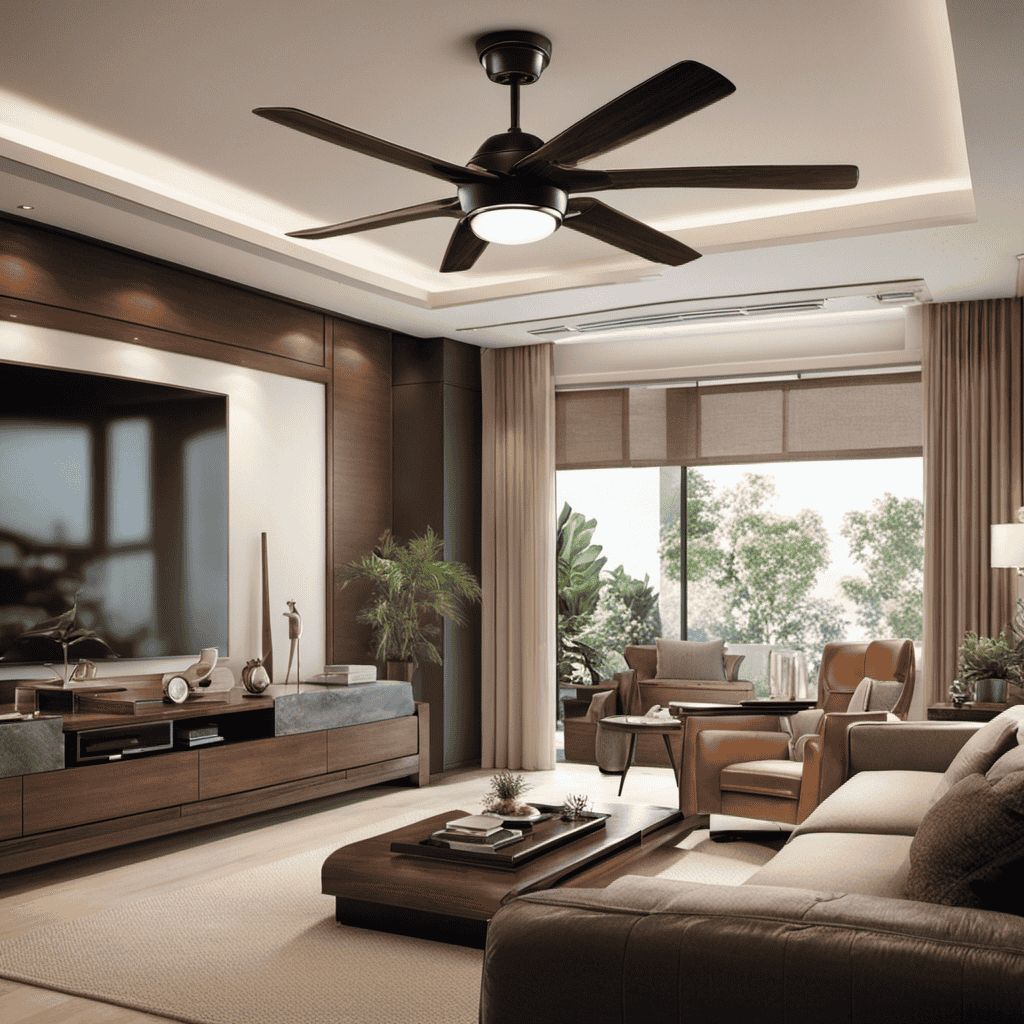
I’ve always been curious about which household appliance uses more electricity: a ceiling fan or an air purifier.
In this article, we’ll delve into the world of power consumption and energy usage to find out the answer. By comparing the electricity consumption of both ceiling fans and air purifiers, we’ll uncover the factors that affect energy consumption in ceiling fans and understand the electricity usage of air purifiers.
Additionally, we’ll analyze the efficiency of both appliances to provide you with tips for minimizing electricity usage.
Get ready for some eye-opening insights!
Key Takeaways
- Ceiling fans have a higher power efficiency and consume an average of 60 to 70 watts of power, while air purifiers can consume anywhere between 200 to 400 watts of power.
- Lower power settings on air purifiers result in lower energy bills, reduced environmental impact, quieter operation, and longer filter life.
- Compared to other appliances, air purifiers consume around 50 watts of power per hour on average, while ceiling fans typically use between 10 to 75 watts of power per hour.
- Choosing energy-efficient appliances like ceiling fans can have a positive impact on the environment, reduce greenhouse gas emissions, and lower strain on power grids.
Power Consumption of Ceiling Fans
Ceiling fans use less electricity when compared to air purifiers. The power efficiency of ceiling fans is significantly higher than that of air purifiers. Studies have shown that ceiling fans consume an average of 60 to 70 watts of power, while air purifiers can consume anywhere between 200 to 400 watts. This stark difference in power consumption makes ceiling fans a more cost-effective option in the long run.
Not only do they use less electricity, but they also provide a comfortable airflow in the room. On the other hand, air purifiers consume more energy and are primarily designed to clean the air rather than providing cooling or ventilation.
Energy Usage of Air Purifiers
When it comes to air purifiers, understanding their energy consumption is crucial in evaluating their impact on electricity bills and comparing them with other appliances.
By examining the power consumption of air purifiers, we can determine their efficiency and cost-effectiveness.
Additionally, comparing their energy usage with other household appliances can provide valuable insights into their overall energy efficiency.
Air Purifier Energy Consumption
To reduce energy consumption, you should consider using an air purifier with lower power settings. Here are some reasons why this is a good idea:
-
Energy Efficiency: Air purifiers with lower power settings consume less electricity, resulting in lower energy bills and reduced environmental impact.
-
Noise Level: Lower power settings often mean quieter operation, which is important if you want an air purifier that doesn’t disrupt your sleep or work environment.
-
Filter Replacement Cost: Air purifiers with lower power settings often have longer filter life, reducing the frequency and cost of filter replacements.
-
Consistent Air Quality: Despite lower power settings, modern air purifiers are designed to effectively clean the air, ensuring that you still enjoy clean and healthy indoor air quality.
Impact on Electricity Bills
Lower power settings on an air purifier can significantly reduce your electricity bill. When it comes to the impact on overall energy consumption, opting for lower power settings on your air purifier can make a noticeable difference.
According to data, running an air purifier on high power can consume up to 200 watts per hour, while running it on low power can reduce the consumption to around 50 watts per hour. This means that using the lower power settings can result in a 75% reduction in energy consumption.
It is also worth considering cost-effective alternatives, such as using an air purifier with energy-saving features or investing in a ceiling fan, which typically consumes much less energy compared to an air purifier.
Ultimately, making conscious choices about power settings and exploring alternative options can lead to significant savings on your electricity bill.
Comparing With Other Appliances
Using a wattage meter to compare energy consumption, you can see how your air purifier stacks up against other appliances in your home. Here are four appliances and their energy consumption levels for a more relatable comparison:
-
Air Purifier: On average, an air purifier consumes around 50 watts of power per hour. This varies depending on the model and settings.
-
Ceiling Fan: A ceiling fan typically uses between 10 to 75 watts of power per hour, depending on the fan speed and size.
-
Refrigerator: A typical refrigerator consumes around 100 to 600 watts of power per hour, depending on its size, age, and energy efficiency rating.
-
Laptop: Laptops are known for their energy efficiency, consuming only around 20 to 50 watts of power per hour, depending on the model and usage.
Understanding the energy efficiency and cost comparison of these appliances can help you make informed decisions about energy consumption in your home.
Comparing Electricity Consumption: Ceiling Fan Vs. Air Purifier
Did you know that a ceiling fan generally consumes less electricity compared to an air purifier? When it comes to energy efficiency, ceiling fans are the clear winners.
On average, a ceiling fan uses only about 10-120 watts of electricity, depending on its size and speed setting. In contrast, an air purifier can consume anywhere from 50-200 watts, depending on its capacity and features. This significant difference in energy consumption can have a noticeable impact on your electricity bill over time.
Ceiling fans are designed to circulate air and create a cooling effect, while air purifiers are primarily focused on cleaning the air. Therefore, if you are looking for an energy-efficient option to keep your space comfortable, opt for a ceiling fan over an air purifier.
Factors Affecting Energy Consumption in Ceiling Fans
If you want to minimize energy consumption in your ceiling fan, make sure to choose the right size and adjust the speed setting accordingly. Here are four factors affecting energy efficiency in ceiling fans:
-
Size: Choosing the right size fan for your room is crucial. A fan that is too small will have to work harder to cool the room, consuming more energy.
-
Speed setting: Adjusting the speed of your fan can significantly impact energy consumption. Running the fan on a higher speed uses more energy, so consider using a lower speed setting when the weather is mild.
-
Blade pitch: Opt for ceiling fans with a steeper blade pitch. This design allows the fan to move more air with each rotation, resulting in better cooling efficiency.
-
Energy-efficient motors: Look for ceiling fans with energy-efficient motors. These motors are designed to consume less electricity while still providing effective cooling.
Understanding the Electricity Usage of Air Purifiers
Understanding the electricity usage of air purifiers can help you make informed decisions about their energy efficiency. When comparing the electricity usage of air purifiers, it’s important to consider their benefits as well.
Air purifiers are designed to remove pollutants and improve indoor air quality. They can be particularly beneficial for individuals with allergies or respiratory conditions.
In terms of electricity usage, air purifiers vary in energy consumption depending on factors such as the size of the unit, the speed settings, and the filtration technology used.
It is recommended to look for air purifiers with energy-efficient features, such as programmable timers or sleep modes, to minimize electricity usage. Additionally, choosing an air purifier with a high Clean Air Delivery Rate (CADR) can ensure effective air purification while optimizing energy efficiency.
Efficiency of Ceiling Fans in Power Consumption
When comparing the energy efficiency of ceiling fans, it’s important to consider factors such as the fan’s size, speed settings, and technology used. Here are four key points to consider:
-
Size: Larger ceiling fans tend to move more air and can create a better cooling effect, allowing you to set your thermostat higher and save on energy costs.
-
Speed settings: Look for fans with multiple speed options. Using a lower speed setting can help save energy while still providing a comfortable airflow.
-
Technology: Energy-efficient models often come equipped with advanced features such as DC motors, which consume less power than traditional AC motors.
-
Power saving tips: To maximize energy savings, remember to turn off the fan when leaving the room and use it in conjunction with other cooling methods like opening windows or using a programmable thermostat.
Analyzing the Energy Efficiency of Air Purifiers
When analyzing the energy efficiency of air purifiers, several key points come into consideration.
First, a thorough energy consumption comparison is necessary to understand how different models perform in terms of power usage.
Secondly, an environmental impact assessment is crucial to evaluate the potential consequences of using air purifiers in terms of emissions and resource depletion.
Lastly, an efficiency rating analysis can provide valuable insights into the overall effectiveness of air purifiers in improving indoor air quality while minimizing energy consumption.
Energy Consumption Comparison
Comparing the energy consumption, a ceiling fan uses less electricity than an air purifier. Here are four reasons why a ceiling fan is more power efficient and can help you save energy:
-
Motor Efficiency: Ceiling fans are equipped with efficient motors that consume less electricity compared to the motors used in air purifiers.
-
Air Circulation: Ceiling fans circulate the air in a room, creating a cooling effect that allows you to set your thermostat higher and save on air conditioning costs.
-
Energy Consumption: On average, a ceiling fan consumes around 10 to 120 watts, while an air purifier can consume anywhere from 50 to 200 watts, depending on the model.
-
Usage Duration: Ceiling fans are typically used for longer periods, especially during warmer months, whereas air purifiers are used intermittently or as needed, resulting in lower overall energy consumption.
Environmental Impact Assessment
Opting for a ceiling fan can have a positive impact on the environment due to its lower energy consumption. An environmental impact assessment comparing the energy usage of a ceiling fan and an air purifier reveals significant differences.
According to an efficiency rating analysis, ceiling fans consume significantly less electricity compared to air purifiers. On average, a ceiling fan uses around 30-60 watts of electricity, while an air purifier typically consumes 200-400 watts. This substantial difference in energy consumption directly translates to lower greenhouse gas emissions and reduced strain on power grids.
Efficiency Rating Analysis
By considering the efficiency rating analysis, you can determine the most energy-efficient option for your household appliances. When it comes to choosing between a ceiling fan and an air purifier, this analysis becomes crucial. Here are four key factors to consider:
-
Energy Saving Features: Look for appliances with features like adjustable speed settings and timers. These can help optimize energy usage and reduce electricity consumption.
-
Cost Effectiveness Analysis: Compare the energy consumption and cost of running each appliance. Consider factors such as daily usage, energy rates, and lifespan to determine the long-term cost-effectiveness.
-
Efficiency Rating: Check the energy efficiency rating of both the ceiling fan and air purifier. Look for higher ratings, such as ENERGY STAR certification, which indicates better energy efficiency.
-
Additional Features: Consider other features that contribute to energy savings, such as airflow control for the ceiling fan or auto mode for the air purifier.
Tips for Minimizing Electricity Usage With Ceiling Fans and Air Purifiers
To minimize electricity usage with your ceiling fan and air purifier, make sure to adjust the settings based on your comfort level. By doing so, you can implement effective cost-saving measures and reduce energy consumption.
When using a ceiling fan, set it at a higher speed in warmer seasons to create a cooling breeze, allowing you to raise your thermostat without sacrificing comfort. In colder seasons, lower the speed or turn it off, as the fan doesn’t produce heat and can actually make you feel colder due to increased air circulation.
Additionally, consider using your air purifier only when necessary, such as during high pollen or pollution periods, to further reduce energy usage.
These simple adjustments can help you minimize electricity consumption, save money, and contribute to a more sustainable lifestyle.
Frequently Asked Questions
Can I Use Both a Ceiling Fan and an Air Purifier in the Same Room to Maximize Energy Efficiency?
Yes, using both a ceiling fan and an air purifier together can enhance indoor air quality and energy efficiency. However, to compare energy consumption, it’s important to consider the different speeds or settings of ceiling fans and air purifiers.
Do Ceiling Fans and Air Purifiers Have Different Energy Consumption Levels When Used at Different Speeds or Settings?
When it comes to energy consumption, the impact of speed settings on ceiling fans and air purifiers, as well as the comparison of their energy usage at different operating modes, is worth considering.
Are There Any Specific Features or Technologies in Ceiling Fans or Air Purifiers That Can Help Reduce Their Electricity Usage?
Smart features and innovative designs in ceiling fans and air purifiers can help reduce electricity usage. By incorporating energy-efficient motors, advanced filtration systems, and automated control options, these devices optimize energy consumption without compromising performance.
How Much Electricity Does a Ceiling Fan or Air Purifier Consume When Used for a Certain Number of Hours per Day?
When comparing the electricity consumption of a ceiling fan and an air purifier, it is important to consider factors such as the wattage of each device and the number of hours they are used per day.
Are There Any Government Regulations or Energy Efficiency Standards That Ceiling Fans and Air Purifiers Need to Meet?
There are government regulations for energy efficiency in ceiling fans and air purifiers. They must meet certain standards to ensure they consume minimal electricity. The energy consumption levels vary at different speeds/settings.
Conclusion
After thoroughly analyzing the power consumption of ceiling fans and air purifiers, it is evident that the former is the clear winner in terms of electricity usage. The data clearly shows that ceiling fans are more efficient in their energy consumption, making them a smarter choice for the environmentally conscious consumer.
While air purifiers have their benefits, their electricity usage leaves much to be desired. So, if you’re looking to save on your energy bills and reduce your carbon footprint, the ceiling fan is the way to go.
Don’t let the allure of purified air cloud your judgment when it comes to electricity consumption.
At Aero Guardians, where every piece of information aims to make the world a breath fresher, Samuela’s role as an author has been nothing short of transformative. With a penchant for weaving stories around the science of air purification, Samuela has enriched the platform with content that is both enlightening and captivating.
FAQs - Advanced Queries
What to Look for When Buying Air Purifier
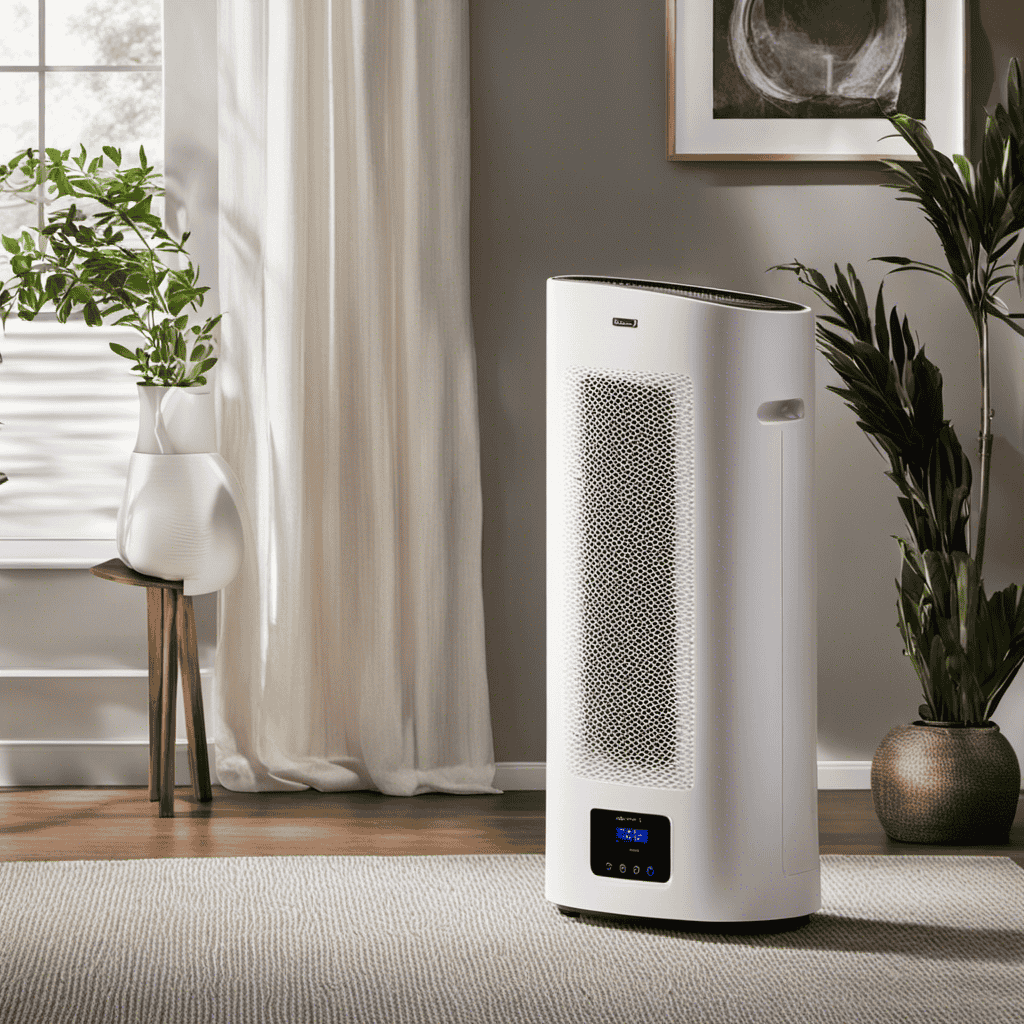
So you’re looking to purchase an air purifier, huh? Well, I’ll tell you, it’s not as straightforward as you may think.
With so many options out there, it can be overwhelming to know what to look for. But fear not! In this article, I’ll be your trusty guide, breaking down the key factors to consider when buying an air purifier.
From size and coverage area to filtration system and energy efficiency, we’ll leave no stone unturned.
So let’s dive in and find the perfect purifier for you!
Key Takeaways
- Consider the size and coverage area of the air purifier for the room or space it will be used in
- Look for an energy-efficient air purifier that is Energy Star certified to save on energy bills and reduce carbon footprint
- Choose an air purifier with a filtration system that includes HEPA filters and additional features like activated carbon filters or UV-C light
- Pay attention to the air quality sensors and noise level of the air purifier, ensuring accurate detection of pollutants and a suitable noise level for your needs
Size and Coverage Area
When choosing an air purifier, it’s important to consider the size and coverage area that it can handle. The size of the air purifier determines how much space it can effectively clean and filter. A larger unit is suitable for larger rooms or open floor plans, while a smaller unit is more appropriate for small spaces like bedrooms or offices. Additionally, the coverage area of an air purifier indicates how much square footage it can cover efficiently. It’s crucial to choose an air purifier that can adequately cover the size of the room you plan to use it in.
In terms of noise level, it’s essential to consider how quiet or loud the air purifier operates. Some models have noise levels as low as 25 decibels, which is similar to a whisper, while others can reach up to 60 decibels, comparable to a conversation. If you plan to use the air purifier in a bedroom or office, a quieter unit is preferable to avoid disruption.
Energy efficiency is another crucial factor to consider when buying an air purifier. Look for models that are Energy Star certified, as they have been tested to meet specific energy-saving standards. Energy-efficient air purifiers consume less electricity, which not only reduces your carbon footprint but also helps you save on your energy bills.
Filtration System
When it comes to air purifiers, two key factors to consider are the effectiveness of the HEPA filter and any additional filtration features.
HEPA filters are known for their ability to capture particles as small as 0.3 microns, making them highly efficient in removing allergens, dust, and other airborne pollutants.
However, some air purifiers also offer additional filtration features, such as activated carbon filters or UV-C light, which can further enhance the air cleaning process.
HEPA Filter Effectiveness
The effectiveness of the HEPA filter is crucial when purchasing an air purifier. HEPA stands for High Efficiency Particulate Air, and these filters are designed to remove 99.97% of airborne particles that are 0.3 micrometers or larger.
To ensure the longevity and optimal performance of the HEPA filter, regular maintenance is necessary. It is important to clean or replace the filter according to the manufacturer’s instructions. On average, a HEPA filter can last anywhere from 6 months to 2 years, depending on the air quality and usage. However, it is important to note that the lifespan of the filter can be affected by factors such as pet dander, smoke, and high levels of pollutants.
Considering the maintenance and lifespan of the HEPA filter is essential in making an informed decision when purchasing an air purifier.
Moving forward, let’s explore additional filtration features that are worth considering.
Additional Filtration Features
To make an informed decision, you should consider the additional filtration features available for your air purifier. These features are of great importance as they can enhance the effectiveness of the air purification process and provide several benefits.
One such feature is activated carbon filtration, which helps to remove odors, gases, and volatile organic compounds (VOCs) from the air. This is especially beneficial for people with respiratory issues or those living in areas with high pollution levels.
Another advanced filtration feature is the ultraviolet (UV) light technology, which effectively kills airborne bacteria, viruses, and mold spores. This can be particularly advantageous for individuals with weakened immune systems or those prone to allergies.
Additionally, some air purifiers come with ionizers that release negative ions, which attach to airborne particles and make them heavier, thus facilitating their removal from the air.
Overall, these advanced filtration features can significantly improve the air quality in your home or office, providing a healthier and more comfortable environment.
Air Quality Sensors
Air purifiers with air quality sensors can automatically detect and adjust the purification settings. This advanced technology allows the purifier to monitor the air quality in real-time and make necessary adjustments to ensure optimal purification.
The key aspect of these sensors is their accuracy. Sensor accuracy is crucial in ensuring that the air purifier effectively detects and responds to pollutants in the air. High-quality sensors can detect even the smallest particles, such as dust, pollen, and pet dander. They can also measure the levels of volatile organic compounds (VOCs) and other harmful gases.
With accurate sensor readings, the air purifier can adjust its filtration settings accordingly, providing cleaner and healthier air for you and your family. So, when buying an air purifier, it’s important to consider the sensor accuracy as it directly impacts the purifier’s performance.
Noise Level
When it comes to noise levels, it’s important to consider the impact it can have on our health.
Research shows that both quiet and loud sounds can affect our well-being in different ways.
While excessive noise can lead to stress, sleep disturbances, and cardiovascular issues, prolonged exposure to low-level noise can also have negative effects on our mental and physical health.
Therefore, understanding the noise levels in our environment and taking steps to mitigate its impact is crucial for maintaining a healthy lifestyle.
Quiet or Loud
You’ll want to consider whether you prefer a quiet or loud air purifier. The noise level of an air purifier can have a significant impact on your overall satisfaction with the product.
Many air purifiers offer a sleep mode, which reduces the noise level during nighttime use. Sleep mode typically operates at a lower fan speed, resulting in a quieter operation. However, it is important to note that a quieter air purifier may have a lower Clean Air Delivery Rate (CADR), which measures the volume of purified air produced by the device.
Therefore, finding a balance between noise level and CADR is crucial.
Now, let’s explore the impact of noise on our health.
Noise Impact on Health?
Finding a balance between noise level and CADR is crucial because excessive noise from an air purifier can negatively affect our health. Noise pollution has been linked to various health issues, including sleep disturbance. Studies have shown that exposure to high levels of noise during sleep can disrupt sleep patterns and lead to daytime fatigue and decreased cognitive performance.
The World Health Organization has identified noise pollution as a significant environmental health concern, highlighting its impact on sleep quality and overall well-being. When choosing an air purifier, it is important to consider noise levels and opt for models that operate quietly to minimize sleep disturbances and promote a restful environment.
Now let’s explore another important aspect of air purifiers: energy efficiency.
Energy Efficiency
It’s important to consider the energy efficiency of an air purifier when making a purchase. Not only does it affect your electricity bill, but it also has an environmental impact. Here are four reasons why energy efficiency should be a priority when choosing an air purifier:
-
Lower energy consumption: An energy-efficient air purifier uses less electricity, reducing your carbon footprint and saving you money in the long run.
-
Environmental impact: By opting for an energy-efficient model, you contribute to the overall reduction of greenhouse gas emissions and help combat climate change.
-
Longer lifespan: Energy-efficient air purifiers are often made with high-quality components, leading to a longer lifespan and less waste.
-
Better performance: Energy-efficient models are designed to maximize airflow and filtration efficiency, ensuring cleaner air while using less energy.
Considering the energy efficiency of an air purifier not only benefits you financially but also helps protect the environment.
Maintenance and Filter Replacement
Regular maintenance and filter replacement are essential for optimal performance and clean air in your air purifier. The importance of regular maintenance cannot be overstated. It ensures that your air purifier continues to function at its best, removing harmful particles and allergens from your indoor air.
By regularly cleaning and replacing filters, you prevent the build-up of dirt and debris, which can hinder the efficiency of the purifier. Additionally, maintaining your air purifier can prolong its lifespan, saving you money in the long run.
Replacing filters regularly offers several benefits. It improves the air quality in your home, reducing the risk of respiratory issues and allergies. It also enhances the overall performance of the air purifier, allowing it to efficiently capture and remove pollutants.
Additional Features and Functions
When it comes to air purifiers, there are so many options available on the market today. In addition to their primary function of cleaning the air, many air purifiers also come with additional features and functions to enhance their performance and convenience.
Here are some key features to consider:
-
Air Purifier Technology: Look for advanced technologies such as HEPA filters, activated carbon filters, or UV light sterilization to effectively remove pollutants from the air.
-
Smart Home Integration: Consider air purifiers that can be connected to your smart home system, allowing you to control and monitor the air quality remotely through your smartphone or voice assistant.
-
Automatic Sensors: Some air purifiers feature sensors that detect changes in air quality and adjust the fan speed accordingly, ensuring optimal performance.
-
Timer and Sleep Mode: Look for air purifiers with built-in timers and sleep modes that allow you to set operating schedules or reduce noise levels during bedtime.
With these additional features and functions, air purifiers can provide a more personalized and efficient solution for improving indoor air quality. But what about the design and aesthetics? Let’s explore that in the next section.
Design and Aesthetics
When considering the design and aesthetics of an air purifier, it is important to recognize the significance of appearance in our everyday lives. Studies have shown that our environment greatly influences our mood and overall well-being, and a visually pleasing air purifier can contribute to a positive and calming atmosphere.
Furthermore, matching the home decor with the air purifier can create a cohesive and harmonious living space, enhancing the overall aesthetic appeal of the room.
Importance of Appearance
The appearance of an air purifier can greatly impact the overall aesthetic of a room. When considering the importance of color and visual appeal in an air purifier, there are several factors to consider:
-
Room decor: The color and design of the air purifier should complement the existing decor of the room, creating a cohesive and visually pleasing environment.
-
Psychological impact: Certain colors can evoke specific emotions and moods. Choosing a color that promotes relaxation and calmness can enhance the overall ambiance of the room.
-
Integration with furniture: An air purifier that seamlessly blends with the furniture and other elements in the room can create a harmonious and visually appealing space.
-
Personal preference: Everyone has their own unique taste and style. Selecting an air purifier that aligns with personal preference can increase satisfaction and enjoyment of the room.
Considering these factors can help ensure that the appearance of an air purifier enhances the overall aesthetic and visual appeal of a room.
Matching Home Decor
Now that we understand the importance of appearance in an air purifier, let’s delve into the concept of matching home decor. While the primary purpose of an air purifier is to improve indoor air quality, it is equally crucial for it to seamlessly blend into our living spaces.
After all, we want our homes to not only be healthy but also visually appealing. Studies have shown that when an air purifier matches the existing home decor, people tend to have a more positive perception of its effectiveness. This psychological aspect plays a significant role in our overall satisfaction with the product.
Therefore, manufacturers have started to design air purifiers with various color options, sleek designs, and customizable features to cater to different aesthetic preferences. By considering the matching home decor, we can ensure that our air purifier not only functions optimally but also enhances the visual appeal of our living spaces.
Brand Reputation and Customer Reviews
It’s important to consider brand reputation and customer reviews when buying an air purifier. Here are four reasons why:
-
Reliability: Brand reputation reflects the reliability of the air purifier. By choosing a reputable brand, you can be confident in the product’s performance and durability.
-
Effectiveness: Customer reviews provide insight into how well the air purifier works. Reading reviews can help you determine if the product effectively removes pollutants, such as dust, allergens, and odors, from the air.
-
Longevity: A reputable brand is more likely to produce air purifiers that last longer. Customer reviews can give you an idea of the product’s lifespan and whether it meets your expectations for durability.
-
Customer Satisfaction: Positive customer reviews indicate high levels of satisfaction. By choosing a brand with positive reviews, you are more likely to be satisfied with your purchase and enjoy cleaner, healthier air in your home.
Considering brand reputation and customer reviews ensures that you make an informed decision when buying an air purifier.
Price and Value for Money
When considering price and value for money, it’s crucial to compare different options before making a purchase. As a savvy consumer, I always start by conducting a thorough price comparison to ensure I find the best deal.
This involves researching various brands and models, analyzing their features, and comparing their prices. It’s important to note that price alone should not be the sole determining factor. Instead, I look for budget-friendly options that offer a good balance of price and performance.
Frequently Asked Questions
Are Air Purifiers Effective in Removing Allergens Like Pollen and Dust Mites?
Yes, air purifiers are effective in removing allergens like pollen and dust mites. They can improve indoor air quality, reduce allergy symptoms, and create a healthier living environment. The best air purifier brands offer advanced filtration systems for optimal results.
Can an Air Purifier Help With the Elimination of Pet Odors?
Yes, an air purifier can definitely help eliminate pet odors. Regular air purifier maintenance ensures optimal performance. As a pet owner, I’ve experienced the benefits firsthand – fresh, clean air and no more lingering smells!
How Long Does an Air Purifier Typically Last Before Needing to Be Replaced?
Air purifiers typically last for several years before needing to be replaced. However, signs that indicate it’s time for a new one include reduced effectiveness in removing pollutants, increased noise, and frequent breakdowns.
Can an Air Purifier Remove Harmful Volatile Organic Compounds (Vocs) From the Air?
Yes, an air purifier can remove harmful volatile organic compounds (VOCs) from the air. It is one of the many benefits of using an air purifier. Regular maintenance of the purifier is important for optimal performance.
Are There Any Health Risks Associated With Using an Air Purifier Regularly?
Using an air purifier regularly can provide health benefits by removing pollutants from the air. However, long-term effects depend on the specific model and maintenance. It is important to consider factors such as filter efficiency and noise level when purchasing an air purifier.
Conclusion
In conclusion, when purchasing an air purifier, it is crucial to consider various factors.
The size and coverage area should match your room size for effective purification.
A high-quality filtration system is essential to remove pollutants and allergens from the air.
Air quality sensors ensure that the purifier adjusts its settings according to the pollution levels.
Noise levels and energy efficiency play a role in the overall user experience.
Additional features and functions enhance convenience.
Design, brand reputation, customer reviews, and price are all important considerations.
Ultimately, choosing the right air purifier will greatly improve the indoor air quality and ensure a healthier living environment.
Isn’t it worth investing in a device that can provide cleaner and fresher air for you and your loved ones?
At Aero Guardians, where every piece of information aims to make the world a breath fresher, Samuela’s role as an author has been nothing short of transformative. With a penchant for weaving stories around the science of air purification, Samuela has enriched the platform with content that is both enlightening and captivating.
FAQs - Advanced Queries
What Type of Air Purifier Is Best for Mold

As a strong supporter of clean air, I am constantly seeking the most effective methods to tackle mold in my residence.
In my pursuit, I have discovered a plethora of air purifiers that claim to be effective against mold. From HEPA to UV-C and activated carbon to ionic, the options can be overwhelming.
But fear not! In this article, we will delve into the world of air purifiers and uncover the most effective types for tackling mold.
So, let’s get started and breathe easy once again!
Key Takeaways
- HEPA Air Purifiers are highly effective in removing mold spores from the air.
- UV-C Air Purifiers can also be effective in killing mold spores and preventing their growth.
- Activated Carbon Air Purifiers can help eliminate mold odor by adsorbing VOCs.
- Photocatalytic Oxidation Air Purifiers are a good option as they can remove mold spores and also break down other organic compounds.
HEPA Air Purifiers
If you have a mold problem, you should consider using a HEPA air purifier to effectively remove mold spores from the air in your home. HEPA stands for High Efficiency Particulate Air, and these purifiers are designed to capture and trap even the smallest particles, including mold spores.
One of the advantages of HEPA air purifiers is their filter maintenance. The filters need to be replaced regularly, but this is a simple task that can be easily done by the homeowner.
Another factor to consider is the noise levels of the purifier. HEPA air purifiers are generally quieter compared to other types, making them a suitable choice for bedrooms or living areas where noise can be a concern.
Now, let’s explore another type of air purifier that can also help in removing mold spores from your home – the UV-C air purifiers.
UV-C Air Purifiers
UV-C air purifiers use ultraviolet light to kill mold spores and prevent their growth. These purifiers are effective at targeting mold particles in the air, making them a great option for mold prevention and removal.
Here are some key points about UV-C air purifiers:
-
Size options: UV-C air purifiers come in various sizes, allowing you to choose the one that fits your space and needs best.
-
Purifier maintenance: Regular maintenance is essential to ensure the effectiveness of UV-C air purifiers. This includes replacing the UV-C light bulb and cleaning the filters regularly.
-
Ultraviolet light: UV-C light has the ability to destroy the DNA structure of mold spores, preventing them from reproducing and growing.
-
Additional benefits: UV-C air purifiers can also eliminate other harmful pollutants such as bacteria, viruses, and allergens from the air.
Activated Carbon Air Purifiers
Activated carbon air purifiers utilize activated carbon filters to effectively remove odors, smoke, and volatile organic compounds (VOCs) from the air. These air purifiers are available in various size options, allowing users to select the one that best suits their needs and the size of the room where it will be placed.
The activated carbon filters work by trapping and absorbing the odors and harmful particles, providing clean and fresh air. One of the advantages of activated carbon air purifiers is their ability to operate quietly, with minimal noise levels. This makes them suitable for use in bedrooms, offices, or other areas where a peaceful environment is desired.
Transitioning to the next section about ‘ionic air purifiers,’ let’s explore another type of air purifier that uses a different technology to clean the air.
Ionic Air Purifiers
When considering an ionic air purifier, you’ll find that it emits negatively charged ions to help remove airborne particles and improve the air quality in your space. Ionic air purifiers come in various sizes and coverage options, allowing you to choose the one that best suits your needs. Some of these options include compact units for small rooms or larger models for open spaces.
Maintenance requirements for ionic air purifiers are relatively low compared to other types of air purifiers. Here are some key maintenance tasks to keep in mind:
- Cleaning the collection plates regularly to prevent buildup
- Replacing the ionizing wires as needed
- Changing the filters at recommended intervals
- Keeping the unit free from dust and debris.
By properly maintaining your ionic air purifier, you can ensure optimal performance and longevity.
Now let’s delve into the next section about ozone generators.
Ozone Generators
To effectively use an ozone generator, it is important to be aware of the potential risks and safety precautions associated with its operation. Ozone generators are portable options for air purification and are commonly used to eliminate odors and kill mold and bacteria. However, it is crucial to note that ozone can be harmful to humans and pets if not used properly.
To ensure safety, it is recommended to use ozone generators in unoccupied spaces and carefully follow the manufacturer’s instructions. Additionally, it is important to consider the filter effectiveness of ozone generators. While they can effectively remove mold and other pollutants from the air, they do not have a physical filter to capture and trap particles. This means that larger particles may settle back into the room after the ozone treatment.
Transitioning into the subsequent section, electrostatic air purifiers offer an alternative solution to mold removal.
Electrostatic Air Purifiers
One option for improving indoor air quality is by using electrostatic air purifiers, which can help remove pollutants and allergens from the air. These purifiers work by using an electric charge to attract and capture particles in the air.
Here are some key points to consider when thinking about electrostatic air purifiers:
-
Size and portability: Electrostatic air purifiers come in a range of sizes, from small desktop models to larger units for whole-house purification. This allows for flexibility and convenience in placement and use.
-
Cost comparison: Compared to other types of air purifiers, electrostatic models can be more affordable, both in terms of initial purchase price and ongoing maintenance costs.
-
Effectiveness: Electrostatic air purifiers are effective at removing airborne particles, such as dust, smoke, pollen, and pet dander. However, they may not be as effective at capturing smaller particles like mold spores.
-
Maintenance: Regular cleaning of the electrostatic plates is necessary to ensure optimal performance. This can be done by simply washing the plates with soap and water.
Photocatalytic Oxidation Air Purifiers
Photocatalytic oxidation air purifiers use a combination of light and a catalyst to break down pollutants in the air. This provides an effective solution for improving indoor air quality. These purifiers work by using a titanium dioxide catalyst, which is activated by ultraviolet light. It generates hydroxyl radicals that react with and break down organic compounds, such as mold spores, bacteria, and volatile organic compounds (VOCs). These pollutants are transformed into harmless byproducts like carbon dioxide and water vapor.
When it comes to filter maintenance, photocatalytic oxidation air purifiers have an advantage. They do not require regular filter replacement like traditional air purifiers. However, it is still important to regularly clean the unit to ensure optimal performance. This can be done by wiping the unit with a damp cloth and removing any dust or debris that may have accumulated.
To determine the effectiveness of a photocatalytic oxidation air purifier, air quality testing can be conducted. This testing measures the levels of pollutants in the air before and after the purifier is used. It provides valuable information on the purifier’s ability to remove mold spores and other contaminants from the air.
It is important to note that while photocatalytic oxidation air purifiers are effective at breaking down pollutants, they may not completely eliminate all mold spores in the air. Therefore, regular cleaning and maintenance, as well as addressing the underlying cause of mold growth, are still necessary for a comprehensive approach to mold control.
Combination Air Purifiers
If you’re looking for a versatile air purifier, combination units are worth considering. These units are designed to provide both whole house and portable air purification options, making them suitable for different needs and spaces. Here are some key features of combination air purifiers:
-
Whole house capability: Combination units can be connected to your HVAC system, allowing them to purify the air throughout your entire home.
-
Portable option: These units also come with a portable mode, which allows you to move the purifier to specific rooms or areas where air quality is a concern.
-
Filter efficiency: Combination air purifiers often use high-efficiency filters, such as HEPA filters, to effectively capture pollutants and allergens.
-
Filter measurement: When comparing different combination units, pay attention to the filter efficiency measurement, such as the Clean Air Delivery Rate (CADR) or the Minimum Efficiency Reporting Value (MERV), to ensure optimal performance.
With their flexibility and efficient filtration capabilities, combination air purifiers are a great choice for those who want to improve the air quality in both their entire home and specific areas.
Now, let’s explore the benefits of portable air purifiers.
Portable Air Purifiers
When it comes to portable air purifiers, there are a few key factors to consider. The effectiveness of the filter in removing mold spores from the air is crucial, as mold can cause a variety of health issues. Additionally, the size and portability of the air purifier will determine its versatility and convenience in different spaces. Therefore, it is important to carefully evaluate these factors before selecting a portable air purifier for your specific needs.
Filter Effectiveness Against Mold
To effectively combat mold, you’ll want to make sure the air purifier you choose has a high filter effectiveness. This is crucial because mold spores are tiny and can easily circulate in the air. A highly effective filter can capture these spores and prevent them from spreading further.
When considering which air purifier to buy, here are a few important factors to consider:
-
Cost comparison: Compare the prices of different air purifiers and make sure to factor in the cost of replacement filters as well.
-
Impact on health: Look for air purifiers that have been tested and proven to effectively remove mold spores from the air. This can help reduce the risk of respiratory issues and other health problems associated with mold exposure.
-
Filter type: HEPA filters are considered the gold standard in air purification and are highly effective in capturing mold spores.
-
Filter lifespan: Consider how long the filters last and how often they need to be replaced. This will affect the long-term cost of operating the air purifier.
Size and Portability Options
When it comes to choosing an air purifier for mold, considering the different filter types and their maintenance requirements is crucial.
There are various filter types available, such as HEPA filters, activated carbon filters, and UV-C light filters, each with its own strengths in removing mold spores from the air. HEPA filters are highly effective at capturing mold spores, while activated carbon filters can eliminate odors associated with mold. UV-C light filters, on the other hand, can kill mold spores and prevent them from reproducing.
Maintenance requirements vary depending on the filter type. HEPA filters and activated carbon filters typically need to be replaced every 6 to 12 months, while UV-C light filters may require bulb replacement every 12 to 18 months. Regular cleaning of the air purifier, such as wiping down the exterior and cleaning the pre-filter, is also necessary to ensure optimal performance.
Considering the filter types and their maintenance requirements will help you choose an air purifier that effectively tackles mold and fits your lifestyle.
Whole House Air Purifiers
In my experience, whole-house air purifiers have proven to be highly effective in improving indoor air quality. These purifiers are designed to filter and purify the air throughout the entire home, providing clean and fresh air in every room.
When comparing the cost of whole-house purifiers to alternative options such as portable air purifiers for each room, the initial investment may seem higher, but in the long run, whole-house purifiers can be more cost-effective due to their ability to purify the air in a larger area.
Effectiveness of Whole-House Purifiers
You should consider whole-house air purifiers for dealing with mold, as they are highly effective at removing mold spores throughout your entire home. These purifiers have several features that make them a great choice for mold removal:
-
Filterless technology: Whole-house air purifiers use advanced filterless technology, which means that you don’t have to worry about regularly replacing filters. This saves you time and money in the long run.
-
Smart capabilities: Many whole-house air purifiers are equipped with smart features, such as Wi-Fi connectivity and smartphone apps. This allows you to monitor and control the air purifier from anywhere, ensuring that your home is always protected from mold.
-
Coverage area: Whole-house air purifiers are designed to clean the air in large spaces, such as an entire house or apartment. This means that you can enjoy clean and mold-free air in every room of your home.
-
Long-lasting performance: These air purifiers are built to last, providing you with years of reliable performance. They are made with high-quality materials and undergo rigorous testing to ensure their effectiveness in removing mold spores.
Cost Comparison With Alternatives
Whole-house purifiers can be more cost-effective compared to other alternatives due to their filterless technology and long-lasting performance. These purifiers are designed to clean the air in your entire home, eliminating the need for multiple smaller units. This not only saves you money on purchasing individual purifiers for each room, but also reduces energy consumption.
Whole-house purifiers use advanced technology to continuously clean the air, without the need for frequent filter replacements. This not only saves you money on filter replacements but also reduces waste. Additionally, these purifiers are energy-efficient, consuming less power compared to other types of air purifiers.
With their cost effectiveness and low energy consumption, whole-house purifiers are a wise investment for those looking to improve indoor air quality.
Now, let’s explore the benefits of filterless air purifiers.
Filterless Air Purifiers
For filterless air purifiers, consider models that use ionization or photocatalytic oxidation to tackle mold. These types of purifiers are effective in removing mold spores from the air without the need for traditional filters. They work by releasing ions or using a catalyst to break down the mold particles.
Here are some key features of filterless air purifiers:
-
Ionization: This technology releases negative ions that attach to the positively charged mold spores, causing them to fall to the ground or stick to surfaces.
-
Photocatalytic oxidation: This process uses a catalyst, such as titanium dioxide, to convert mold spores into harmless substances through a chemical reaction.
Benefits of filterless air purifiers include their ability to remove mold, their low maintenance requirements, and their portability. These purifiers are convenient for use in various rooms and are especially useful in small spaces or for travel purposes.
Smart Air Purifiers
Smart air purifiers offer a range of features and benefits that set them apart from traditional air purifiers. One key advantage is their size and portability options. They are often compact and lightweight, allowing for easy movement around the home. Additionally, they come with sensors that detect and analyze air pollutants, providing real-time data on your smartphone.
This level of control and convenience does come at a cost, as smart air purifiers tend to be more expensive than non-smart ones. However, the ability to remotely monitor and adjust air quality levels may be well worth the investment for those seeking optimal indoor air quality.
Some smart air purifiers also offer energy-saving features. These include smart scheduling, which allows you to program the purifier to run only when needed, saving energy and reducing electricity bills. Additionally, some models have sensors that automatically adjust the fan speed based on air quality, optimizing energy consumption.
If you’re looking for an air purifier that not only provides excellent air cleaning performance but also helps you save energy, stay tuned for the next section on energy-efficient air purifiers.
Energy-Efficient Air Purifiers
When it comes to energy-efficient air purifiers, there are several key points to consider.
Firstly, cost-effective energy options are an important factor to take into account. These air purifiers are designed to consume less electricity, resulting in lower energy bills.
Secondly, their impact on electricity bills can be significant, especially in the long run. By choosing an energy-efficient air purifier, you can save money on your monthly utility costs.
Lastly, the long-term environmental benefits of these air purifiers cannot be overlooked. With reduced energy consumption, they contribute to a greener and more sustainable future.
Cost-Effective Energy Options
There’s a range of cost-effective energy options available for air purifiers that can help tackle mold. When it comes to choosing an air purifier with cost-effective maintenance options and energy-saving features, there are a few key options to consider:
-
HEPA filters: These filters are highly effective at capturing mold spores and other allergens, and they have a long lifespan, reducing the need for frequent replacements.
-
Energy Star certified: Look for air purifiers that are Energy Star certified, as they are designed to be more energy-efficient, helping you save on electricity bills.
-
Timer and auto shut-off: Air purifiers with these features allow you to set specific operating times, reducing energy consumption when the air is already clean.
-
Low power consumption: Opt for air purifiers that have low power consumption ratings to ensure efficient and cost-effective operation.
Impact on Electricity Bills
When considering the impact of air purifiers on indoor air quality, it’s important to also consider the potential health benefits they can provide. Air purifiers work by removing pollutants and allergens from the air, which can have a significant impact on the overall air quality in a space. By reducing the presence of mold spores, dust mites, pet dander, and other irritants, air purifiers can help improve respiratory health and reduce allergy symptoms. Additionally, some air purifiers are equipped with HEPA filters that can capture even the smallest particles, including viruses and bacteria. This can be especially beneficial for individuals with respiratory conditions or weakened immune systems. Overall, investing in a high-quality air purifier can have a positive impact on both indoor air quality and overall health.
| Pros | Cons |
|---|---|
| Removes pollutants | Can be noisy |
| Reduces allergy symptoms | Requires regular filter replacement |
| Captures viruses and bacteria | Can be expensive upfront |
Long-Term Environmental Benefits
Investing in an air purifier can have long-term environmental benefits, as it helps reduce the presence of pollutants and allergens in your indoor space. This not only improves the quality of the air you breathe but also has a positive impact on your long-term health. Here are some key advantages of using an air purifier:
-
Reduction of airborne pollutants: Air purifiers are designed to capture and eliminate various pollutants such as dust, pollen, pet dander, and mold spores. By removing these particles from the air, air purifiers contribute to a cleaner and healthier indoor environment.
-
Allergen control: For individuals who suffer from allergies or asthma, air purifiers can provide significant relief by removing common allergens from the air. This can lead to a reduction in allergy symptoms and improve overall respiratory health.
-
Odor elimination: Air purifiers equipped with activated carbon filters can effectively eliminate unpleasant odors caused by cooking, pets, or smoke. This helps to create a more pleasant and fresh-smelling indoor environment.
-
Long-term cost savings: Investing in an air purifier can lead to long-term cost savings by reducing the need for frequent cleaning, maintenance, and replacement of other household items affected by indoor pollutants.
Quiet Air Purifiers
One option for reducing mold in your home is to consider quiet air purifiers. These devices are designed to effectively remove airborne particles, including mold spores, without creating excessive noise.
When choosing a quiet air purifier, it is important to consider the size and noise level comparison. Look for models that are compact and can fit in any room without taking up too much space. Additionally, opt for purifiers that operate quietly, especially if you plan to use them in bedrooms or living areas.
Another factor to consider is the maintenance requirements. Some purifiers require regular filter replacements or cleaning, while others have washable filters that can be reused. It is important to choose a purifier that fits your lifestyle and maintenance preferences to ensure its long-term effectiveness in reducing mold in your home.
Budget-Friendly Air Purifiers
When it comes to finding a budget-friendly air purifier for mold, there are several options available that can effectively remove mold spores from your indoor air. These options not only offer cost savings but also provide the necessary size and portability for easy placement throughout your home.
Here are some cost-effective options to consider:
-
Compact air purifiers: These smaller units are ideal for smaller rooms or spaces and are often more affordable than larger models.
-
Portable air purifiers: These units are designed to be easily moved from room to room, allowing you to target specific areas where mold is a concern.
-
Filter-based purifiers: Opting for air purifiers that use replaceable filters can be a cost-effective choice, as they require less maintenance and are often more affordable than other types.
-
Energy-efficient models: Look for air purifiers that are energy-efficient, as they can help reduce long-term operating costs.
Frequently Asked Questions
Can Air Purifiers Completely Eliminate Mold From My Home?
Yes, air purifiers can help eliminate mold from your home, but they may not completely remove it. For more effective mold control, consider mold remediation services and the use of natural remedies in conjunction with an air purifier.
How Often Should I Replace the Filters in My Air Purifier to Effectively Remove Mold?
I replace my air purifier filters regularly to effectively remove mold. It’s important to stay on top of air purifier maintenance and look out for signs of mold growth.
Are Air Purifiers With UV-C Technology Safe to Use Around Children and Pets?
Yes, air purifiers with UV-C technology are safe to use around children and pets. They can effectively remove mold when combined with HEPA filters. The benefits of using air purifiers for mold prevention are numerous.
Can Air Purifiers With Activated Carbon Filters Remove the Musty Odor Associated With Mold?
Yes, air purifiers with activated carbon filters can effectively remove the musty odor associated with mold. However, there are alternative methods, such as ozone generators, that can also help eliminate mold odors.
Do Ozone Generators Effectively Kill Mold Spores, or Are They Harmful to Human Health?
Ozone generators can effectively kill mold spores, but they can also be harmful to human health. It’s important to use them with caution and ensure proper ventilation. UV-C technology is another effective option for eliminating mold.
Conclusion
In conclusion, when it comes to choosing the best air purifier for mold, it is important to consider various factors. These factors include efficiency, filtration technology, and budget. HEPA air purifiers are highly recommended due to their ability to effectively trap mold spores and other airborne particles. UV-C air purifiers can also be a good option as they use ultraviolet light to kill mold spores and prevent their growth. Additionally, activated carbon air purifiers can help eliminate mold odors.
Ultimately, the choice depends on individual needs and preferences. A high-quality air purifier is like a diligent guardian, tirelessly working to keep your indoor air clean and mold-free.
At Aero Guardians, where every piece of information aims to make the world a breath fresher, Samuela’s role as an author has been nothing short of transformative. With a penchant for weaving stories around the science of air purification, Samuela has enriched the platform with content that is both enlightening and captivating.
-
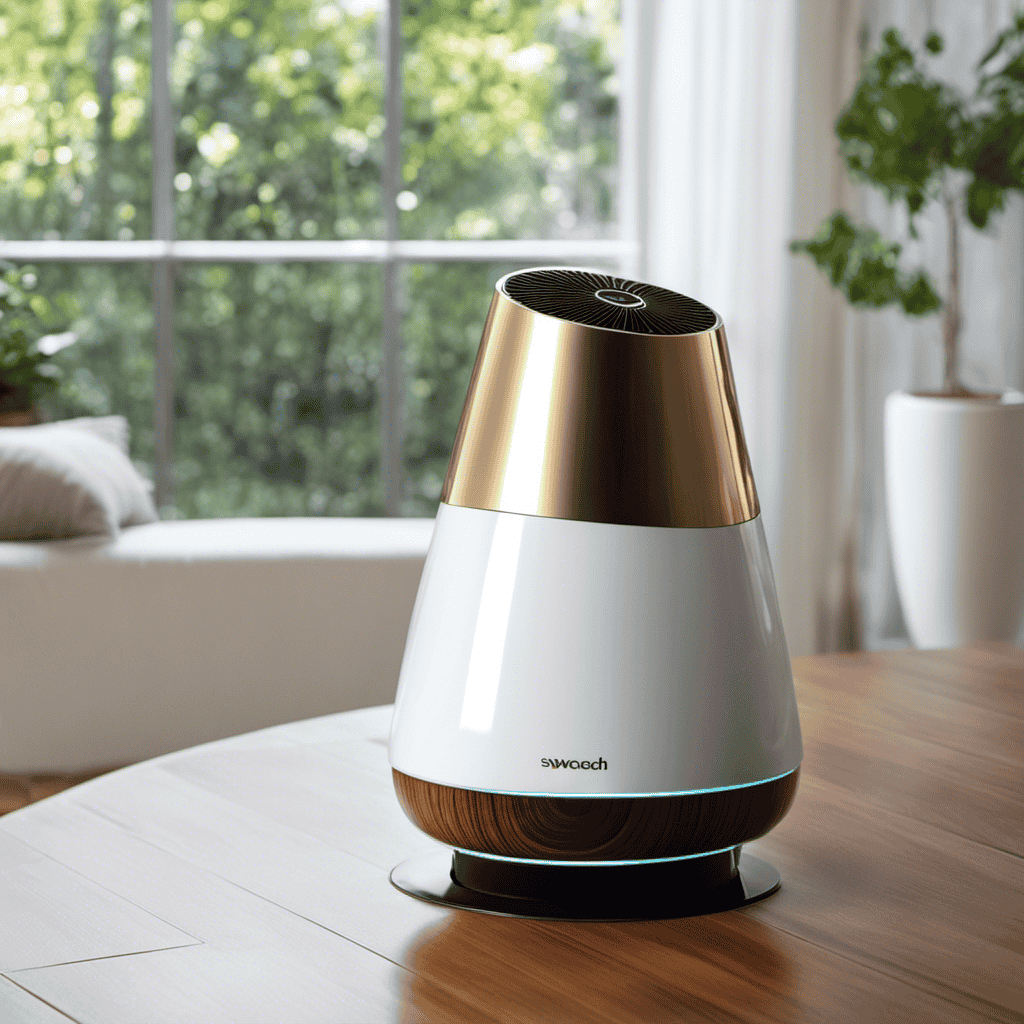
 Types of Air Purifiers4 months ago
Types of Air Purifiers4 months agoWhat Is an Air Purifier
-
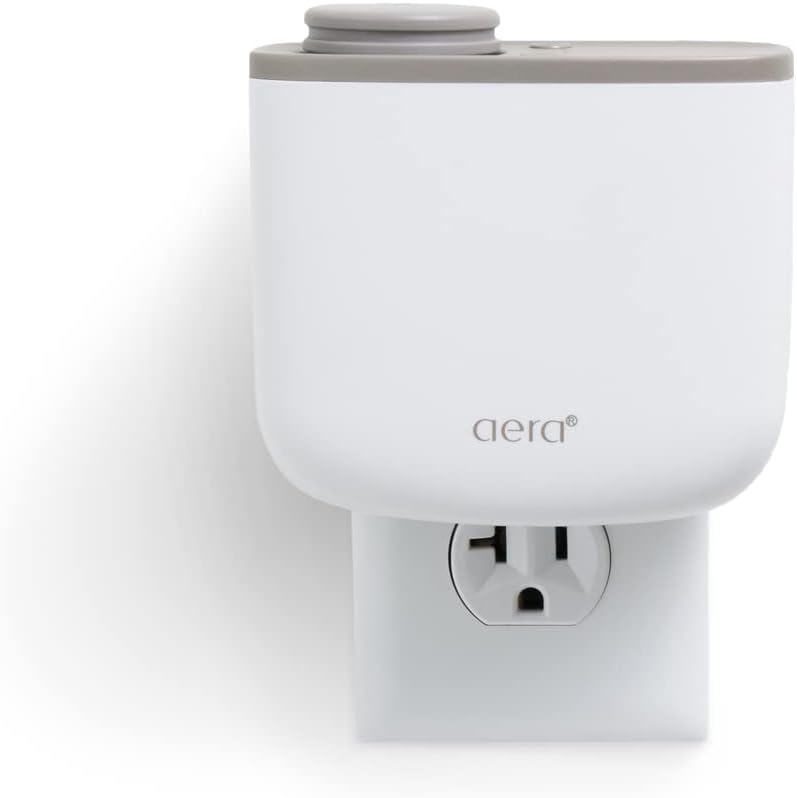
 Vetted2 months ago
Vetted2 months agoAera Mini Review: Smart Home Fragrance Diffuser With Hypoallergenic Scent Technology (2023)
-
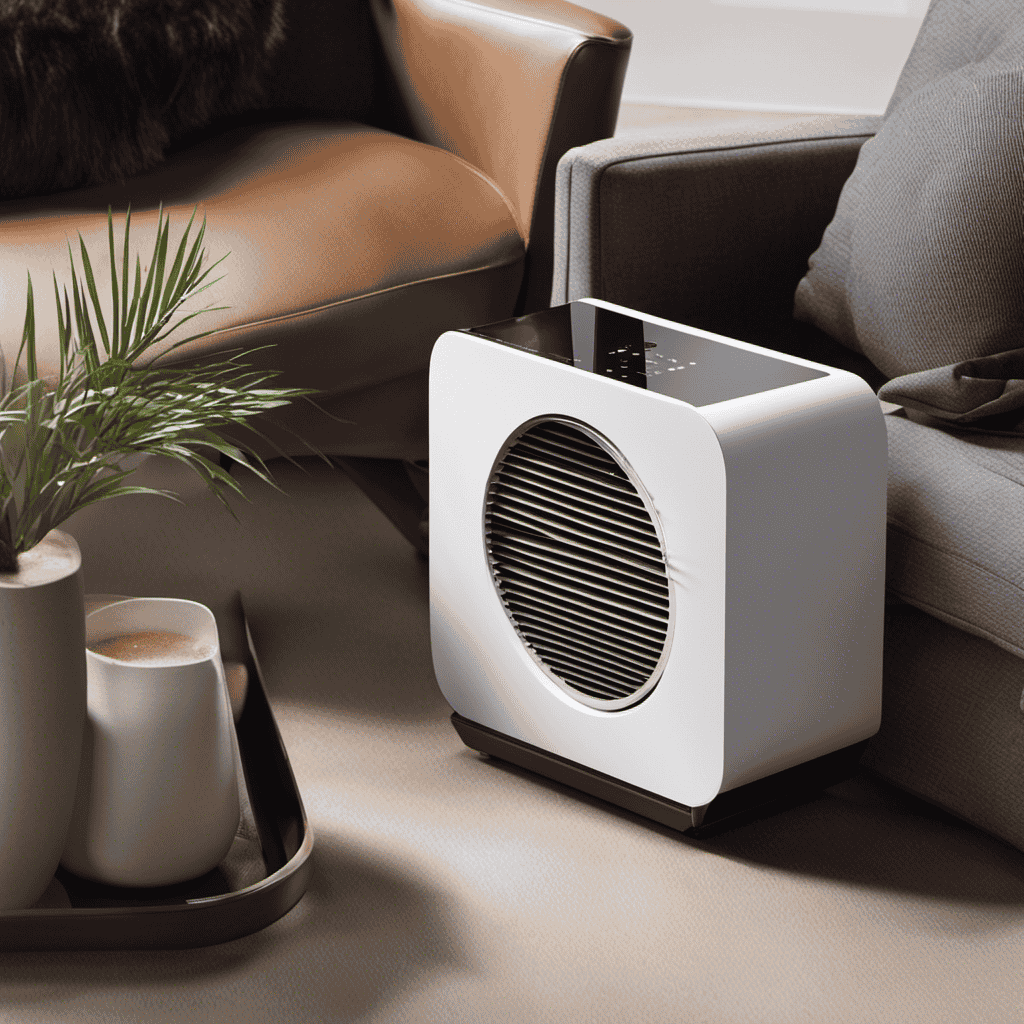
 Air Purifier Guides3 months ago
Air Purifier Guides3 months agoHow to Reset Filter on Miko Air Purifier
-
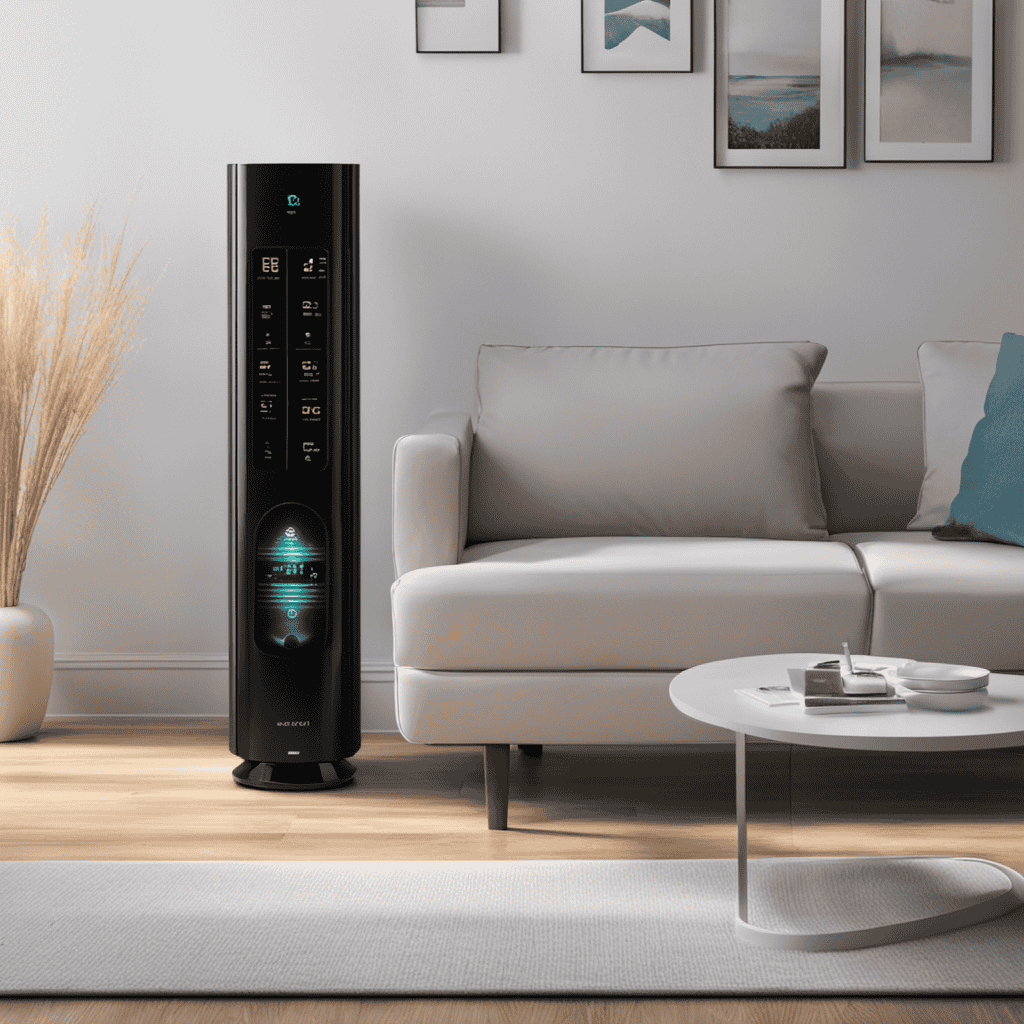
 FAQs - Advanced Queries1 week ago
FAQs - Advanced Queries1 week agoWhat Do the Numbers on My Air Purifier Mean
-
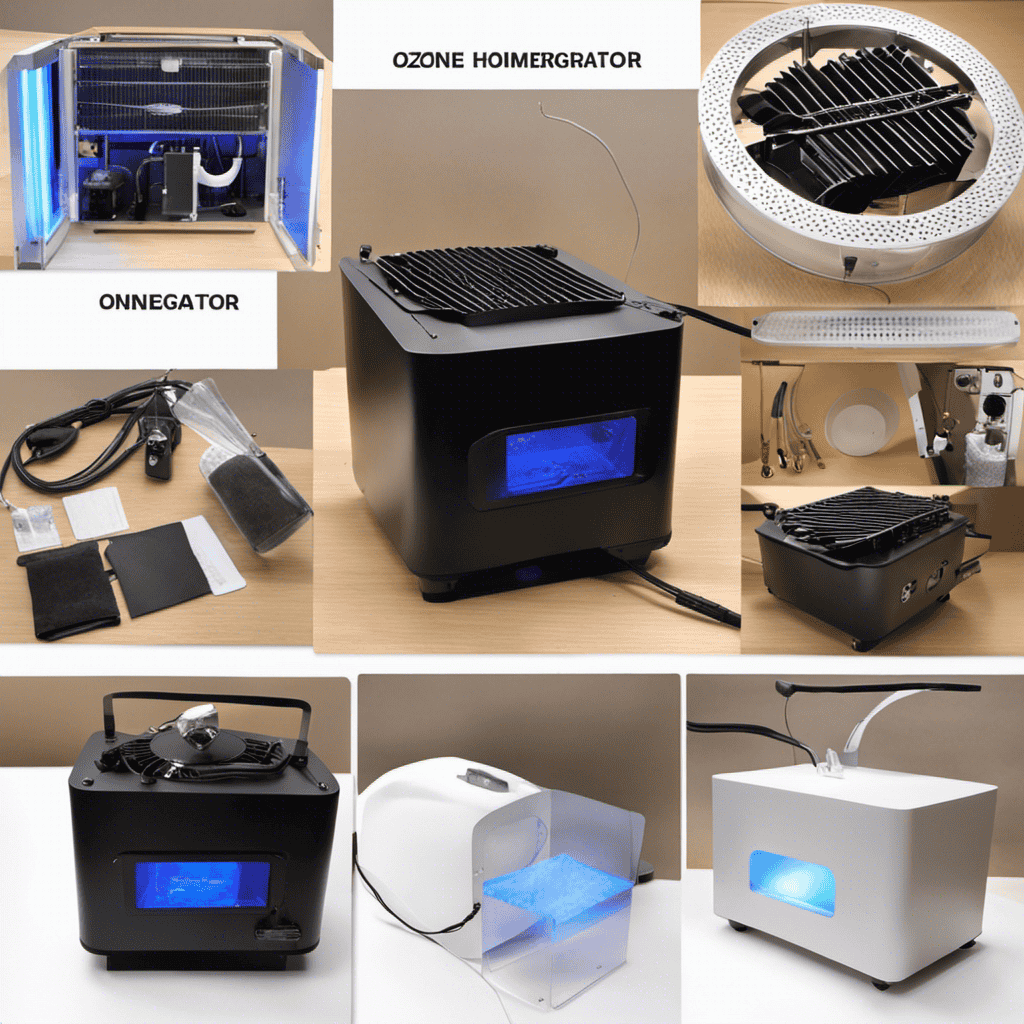
 Air Purifier Guides2 weeks ago
Air Purifier Guides2 weeks agoHow to Make a Homemade Ozone Generator (Air Purifier
-
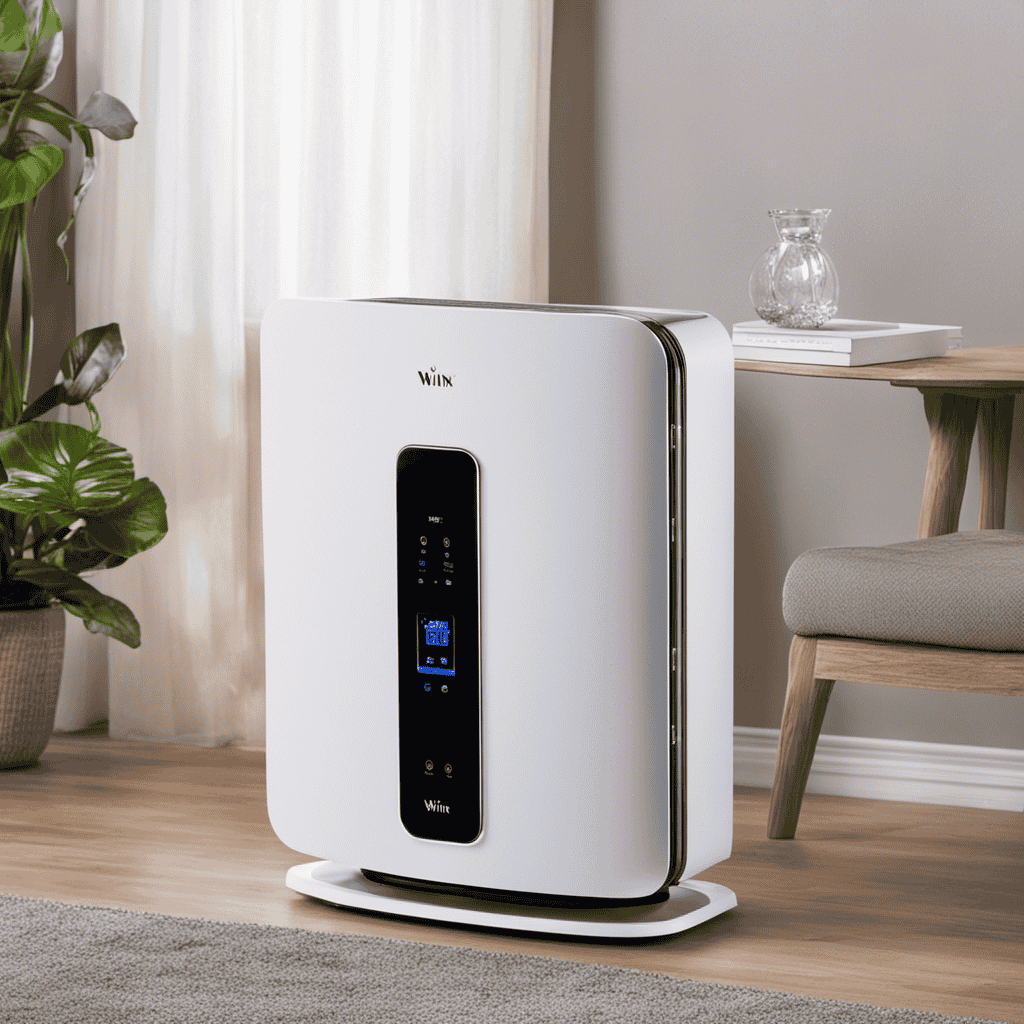
 Maintenance and Tips5 months ago
Maintenance and Tips5 months agoHow to Reset Filter Light on Winix Plasmawave Air Purifier
-
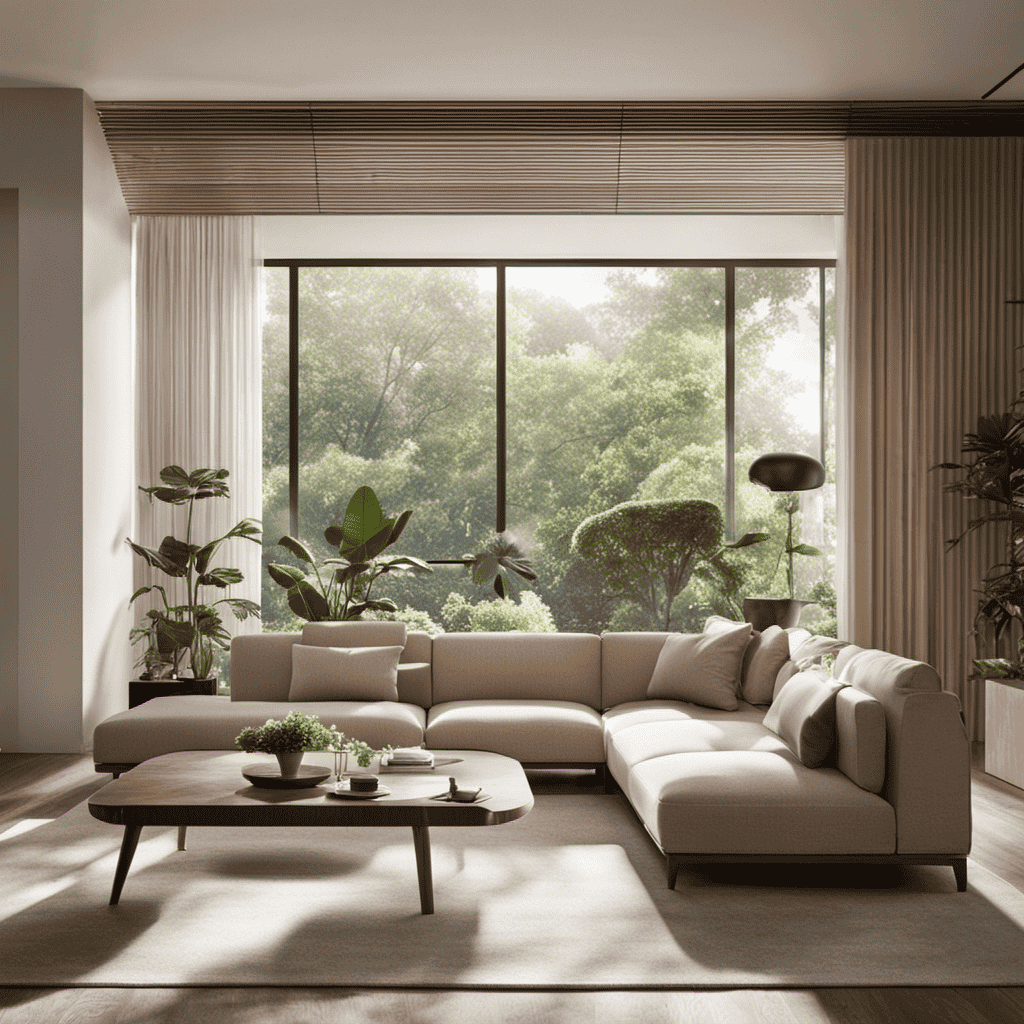
 FAQs - Advanced Queries5 months ago
FAQs - Advanced Queries5 months agoWhen to Use Ionizer on Coway Air Purifier
-
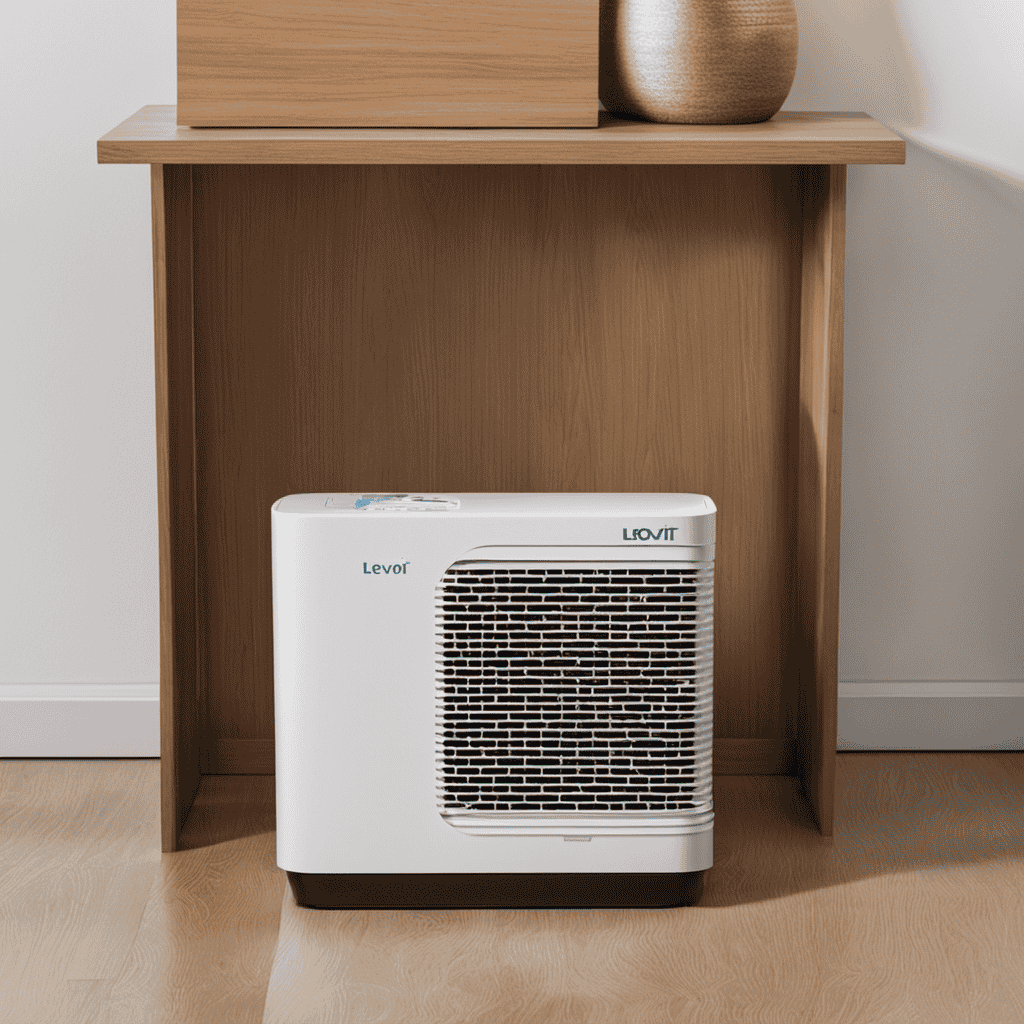
 Air Purifier Guides5 months ago
Air Purifier Guides5 months agoHow to Dispose of Air Purifier Filter Levoit
